Mitochondrial TSPO Deficiency Triggers Retrograde Signaling in MA-10 Mouse Tumor Leydig Cells
- PMID: 33383772
- PMCID: PMC7795497
- DOI: 10.3390/ijms22010252
Mitochondrial TSPO Deficiency Triggers Retrograde Signaling in MA-10 Mouse Tumor Leydig Cells
Abstract
The mitochondrial translocator protein (TSPO) has been shown to bind cholesterol with high affinity and is involved in mediating its availability for steroidogenesis. We recently reported that targeted Tspo gene deletion in MA-10 mouse tumor Leydig cells resulted in reduced cAMP-stimulated steroid formation and significant reduction in the mitochondrial membrane potential (ΔΨm) compared to control cells. We hypothesized that ΔΨm reduction in the absence of TSPO probably reflects the dysregulation and/or maintenance failure of some basic mitochondrial function(s). To explore the consequences of TSPO depletion via CRISPR-Cas9-mediated deletion (indel) mutation in MA-10 cells, we assessed the transcriptome changes in TSPO-mutant versus wild-type (Wt) cells using RNA-seq. Gene expression profiles were validated using real-time PCR. We report herein that there are significant changes in nuclear gene expression in Tspo mutant versus Wt cells. The identified transcriptome changes were mapped to several signaling pathways including the regulation of membrane potential, calcium signaling, extracellular matrix, and phagocytosis. This is a retrograde signaling pathway from the mitochondria to the nucleus and is probably the result of changes in expression of several transcription factors, including key members of the NF-κB pathway. In conclusion, TSPO regulates nuclear gene expression through intracellular signaling. This is the first evidence of a compensatory response to the loss of TSPO with transcriptome changes at the cellular level.
Keywords: RNA-seq; calcium homeostasis; genomic edition; mitochondria; retrograde signaling; translocator protein.
Conflict of interest statement
The authors declare no conflict of interest.
Figures
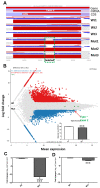
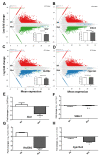
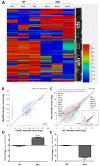

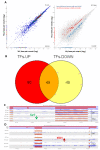
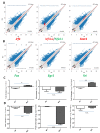
Similar articles
-
CRISPR/Cas9‒Mediated Tspo Gene Mutations Lead to Reduced Mitochondrial Membrane Potential and Steroid Formation in MA-10 Mouse Tumor Leydig Cells.Endocrinology. 2018 Feb 1;159(2):1130-1146. doi: 10.1210/en.2017-03065. Endocrinology. 2018. PMID: 29300865 Free PMC article.
-
Translocator Protein (TSPO) Affects Mitochondrial Fatty Acid Oxidation in Steroidogenic Cells.Endocrinology. 2016 Mar;157(3):1110-21. doi: 10.1210/en.2015-1795. Epub 2016 Jan 7. Endocrinology. 2016. PMID: 26741196 Free PMC article.
-
Transcriptional regulation of translocator protein (Tspo) via a SINE B2-mediated natural antisense transcript in MA-10 Leydig cells.Biol Reprod. 2012 May 10;86(5):147, 1-15. doi: 10.1095/biolreprod.111.097535. Print 2012 May. Biol Reprod. 2012. PMID: 22378763 Free PMC article.
-
The 18 kDa translocator protein (TSPO): a new perspective in mitochondrial biology.Curr Mol Med. 2012 May;12(4):356-68. doi: 10.2174/1566524011207040356. Curr Mol Med. 2012. PMID: 22364127 Review.
-
Channel-like functions of the 18-kDa translocator protein (TSPO): regulation of apoptosis and steroidogenesis as part of the host-defense response.Curr Pharm Des. 2007;13(23):2385-405. doi: 10.2174/138161207781368710. Curr Pharm Des. 2007. PMID: 17692008 Review.
Cited by
-
Deletion of Mitochondrial Translocator Protein (TSPO) Gene Decreases Oxidative Retinal Pigment Epithelial Cell Death via Modulation of TRPM2 Channel.Biology (Basel). 2021 Apr 28;10(5):382. doi: 10.3390/biology10050382. Biology (Basel). 2021. PMID: 33924902 Free PMC article.
-
Unraveling mitochondrial crosstalk: a new frontier in heart failure pathogenesis.Front Cardiovasc Med. 2025 Jul 15;12:1641023. doi: 10.3389/fcvm.2025.1641023. eCollection 2025. Front Cardiovasc Med. 2025. PMID: 40734976 Free PMC article. Review.
-
In vitro and in vivo studies on the effect of a mitochondrial fusion promoter on Leydig cell integrity and function.Front Toxicol. 2024 Mar 6;6:1357857. doi: 10.3389/ftox.2024.1357857. eCollection 2024. Front Toxicol. 2024. PMID: 38511146 Free PMC article.
-
Age-Dependent Regulation of Hippocampal Inflammation by the Mitochondrial Translocator Protein in Mice.Aging Cell. 2025 Jun;24(6):e70039. doi: 10.1111/acel.70039. Epub 2025 Apr 24. Aging Cell. 2025. PMID: 40275629 Free PMC article.
-
Imaging neuroinflammation with TSPO: A new perspective on the cellular sources and subcellular localization.Pharmacol Ther. 2022 Jun;234:108048. doi: 10.1016/j.pharmthera.2021.108048. Epub 2021 Nov 27. Pharmacol Ther. 2022. PMID: 34848203 Free PMC article. Review.
References
-
- Papadopoulos V., Baraldi M., Guilarte T.R., Knudsen T.B., Lacapere J.J., Lindemann P., Norenberg M.D., Nutt D., Weizman A., Zhang M.R., et al. Translocator protein (18kDa): New nomenclature for the peripheral-type benzodiazepine receptor based on its structure and molecular function. Trends Pharmacol. Sci. 2006;27:402–409. doi: 10.1016/j.tips.2006.06.005. - DOI - PubMed
-
- Rone M.B., Midzak A.S., Issop L., Rammouz G., Jagannathan S., Fan J., Ye X., Blonder J., Veenstra T., Papadopoulos V. Identification of a dynamic mitochondrial protein complex driving cholesterol import, trafficking, and metabolism to steroid hormones. Mol. Endocrinol. 2012;26:1868–1882. doi: 10.1210/me.2012-1159. - DOI - PMC - PubMed
MeSH terms
Substances
Grants and funding
LinkOut - more resources
Full Text Sources
Molecular Biology Databases

